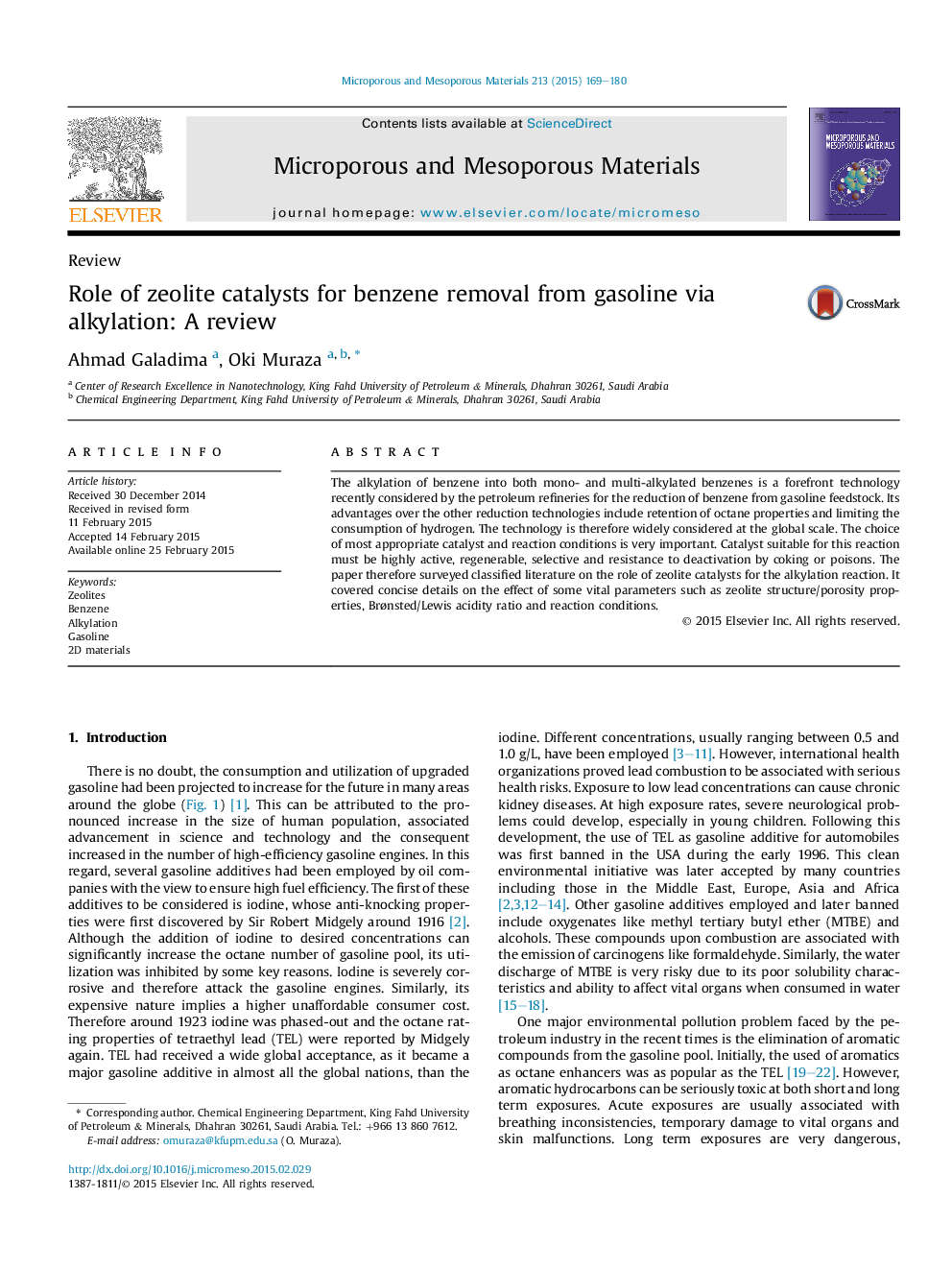| Article ID | Journal | Published Year | Pages | File Type |
|---|---|---|---|---|
| 72524 | Microporous and Mesoporous Materials | 2015 | 12 Pages |
•Benzene reduction from gasoline pool using zeolites is crucial for greener fuel.•Enhanced porosity multi-dimensional structure promote the diffusion in alkylation.•Brønsted to Lewis acidity ratio is the important to suppress side reactions.•Recent 2D layered aluminosilicates open plethora of future investigations.•Further studies are still required to identify best reaction conditions.
The alkylation of benzene into both mono- and multi-alkylated benzenes is a forefront technology recently considered by the petroleum refineries for the reduction of benzene from gasoline feedstock. Its advantages over the other reduction technologies include retention of octane properties and limiting the consumption of hydrogen. The technology is therefore widely considered at the global scale. The choice of most appropriate catalyst and reaction conditions is very important. Catalyst suitable for this reaction must be highly active, regenerable, selective and resistance to deactivation by coking or poisons. The paper therefore surveyed classified literature on the role of zeolite catalysts for the alkylation reaction. It covered concise details on the effect of some vital parameters such as zeolite structure/porosity properties, Brønsted/Lewis acidity ratio and reaction conditions.
Graphical abstractFigure optionsDownload full-size imageDownload as PowerPoint slide
